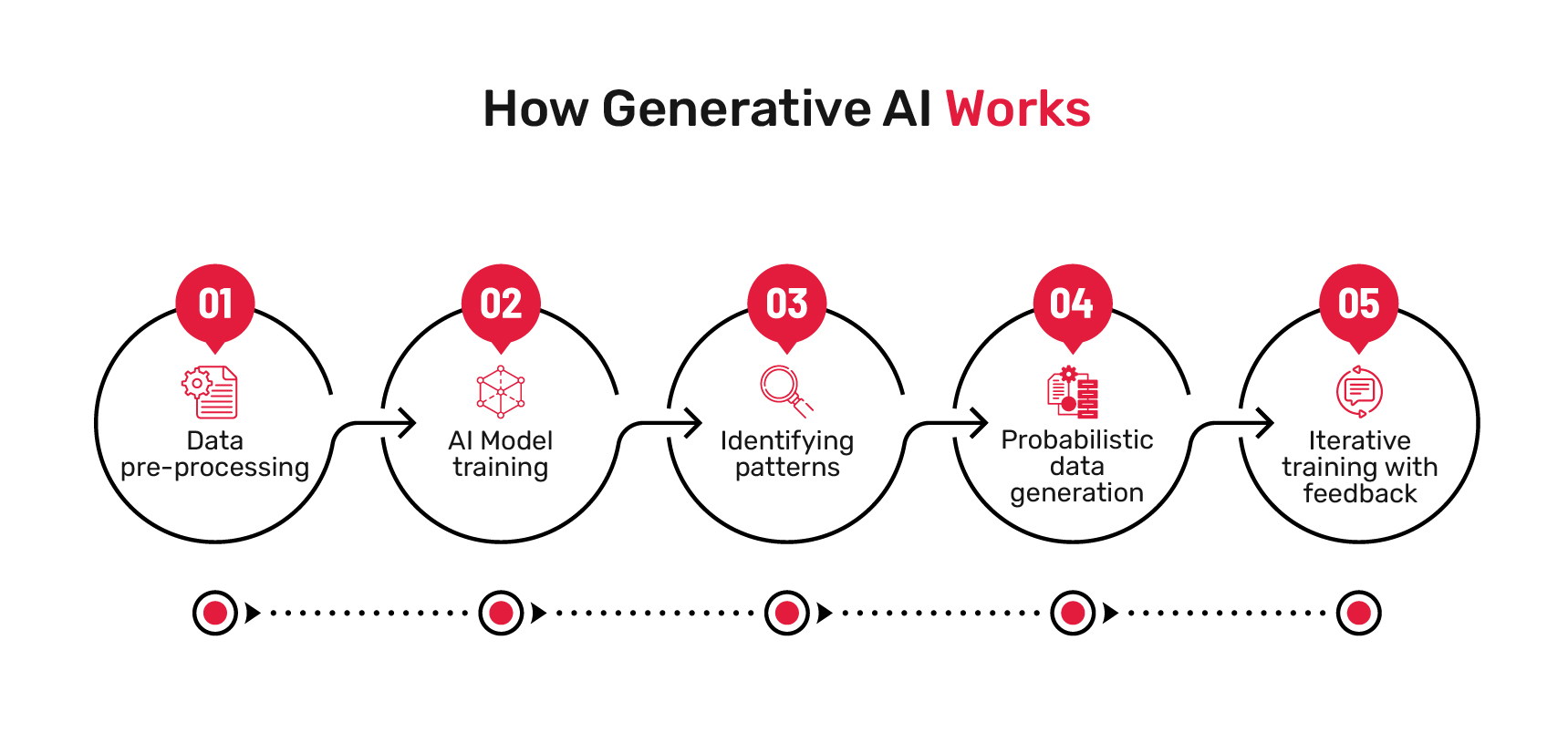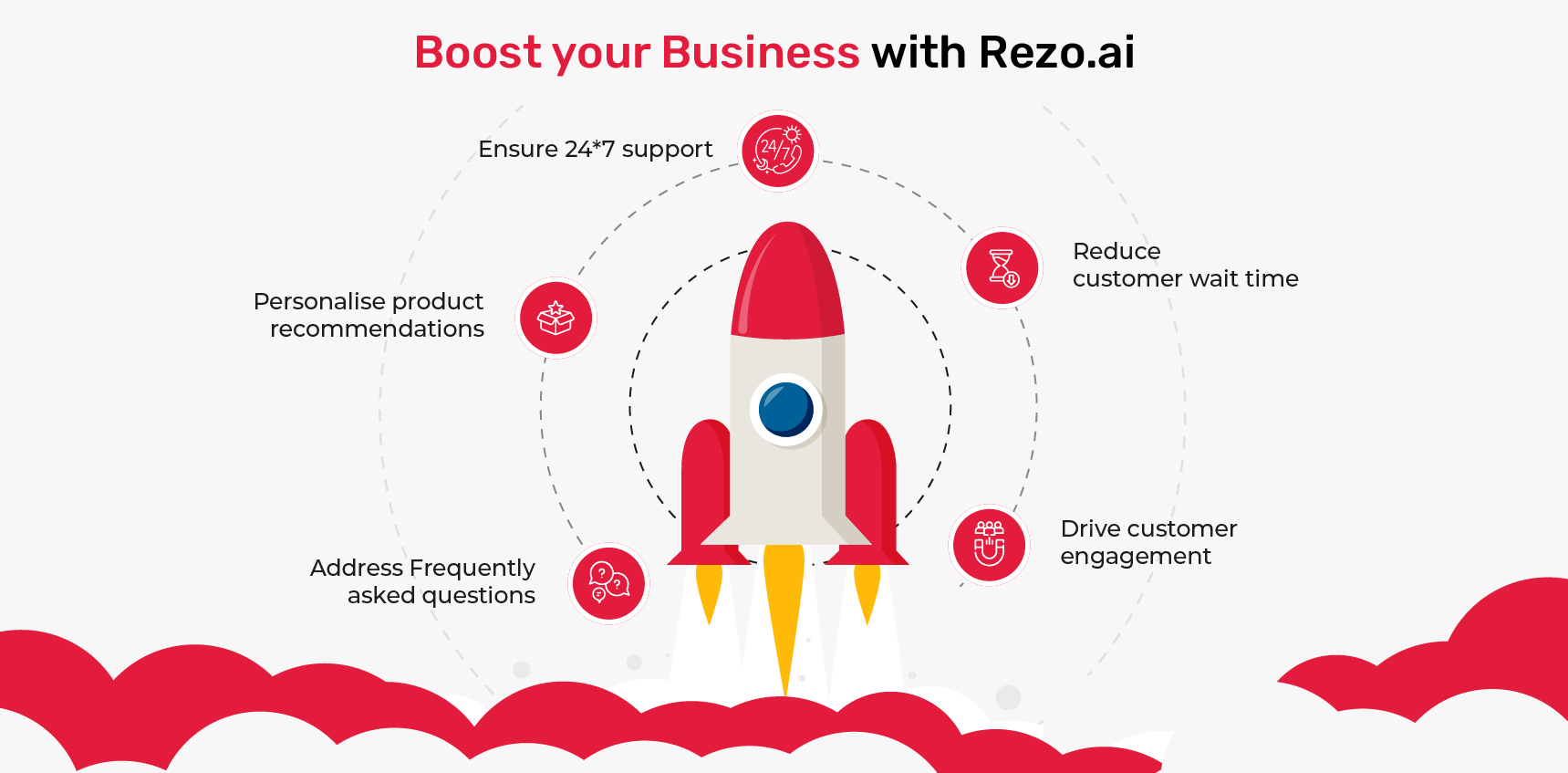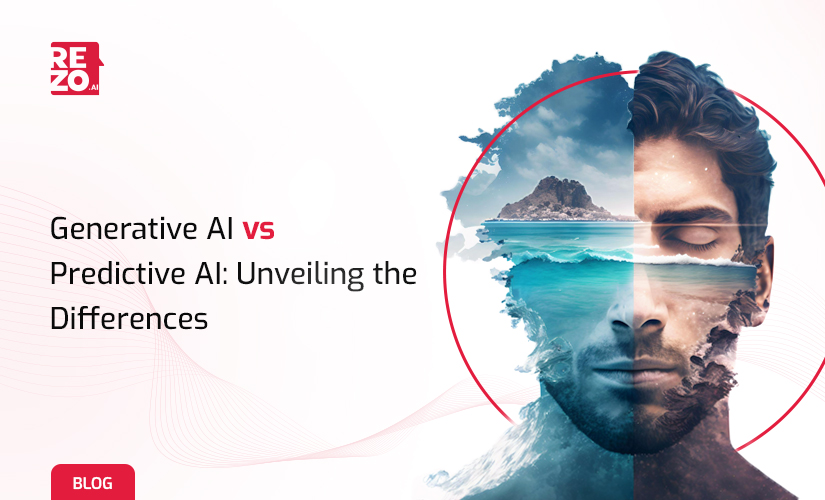
What is Generative AI and How it Works?

Generative AI is one of the most cutting-edge and beneficial discoveries in artificial intelligence. It has transformed the way business conduct their daily operations and interact with their customers. In this article, we will explore how does generative AI work and the different models of generative AI that can help in business processes.
As per the leading technology and research firm, Gartner, 30% of manufacturers will use generative AI to enhance their product development effectiveness by 2027. A PwC report says that AI is expected to add $15.7 Tn to the global economy by 2030, with generative AI being one of the key drivers of this growth.
What is Generative AI?
An extension of conversational AI, Generative AI is a branch of artificial intelligence that enables machines (i.e., computers) to create or generate content that resembles human-generated content. It uses neural networks and complex algorithms to produce text, images, music, and more with patterns learned from extensive datasets. Leveraging Natural Language Processing and Large Language models, Generative AI creates an end-to-end solution to create a human-like dialogue flow.
What are the Benefits of Generative AI?
Generative AI offers versatility and innovation across various domains, driving efficiency and creativity. Top five benefits of Generative AI is as follows:
- Efficient Content Generation: Generative AI automates the creation of text, images, and more, saving time and resources in content production.
- Enhanced Creativity: It inspires artists, writers, and designers by generating ideas and assisting in the creative process.
- Personalised Experiences: Generative AI enables personalised recommendations, enhancing user experiences and engagement.
- Natural Language Understanding: Language models improve chatbots, virtual assistants, and customer support interactions by generating human-like text.
- Scientific Advancements: It supports scientific research, aiding in data analysis, hypothesis generation, and experimentation.
How does Generative AI Work?

Whether it’s generating text, images, music, or other forms of data, there are several steps involved. Let’s delve deeper into how does generative AI works:
1. Data Collection and Preprocessing
The process of generative AI begins with the gathering of large and varied datasets. These datasets can include any kind of data that the AI is meant to produce, including text, pictures, audio, and other types of data. Data preprocessing involves cleaning and organizing the collected data, making it suitable for training machine learning models.
2. Training the AI Model
Generative AI models typically use deep neural networks, such as Recurrent Neural Networks (RNNs), Convolutional Neural Networks (CNNs), or Transformer-based models like GPT (Generative Pre-trained Transformer) and Variational Autoencoders (VAEs).
During training, the AI model learns the underlying patterns, structures, and relationships present in the training data. For example, a text-generating model learns grammar, syntax, and language semantics, while an image generator learns to recognize objects, textures, and colors.
3. Learning Patterns and Structures
The AI model learns to understand and replicate the patterns and structures found in the training data. This involves identifying correlations, dependencies, and statistical relationships between different elements of the data.
In text generation, the model learns how words and phrases fit together to form coherent sentences and paragraphs. In image generation, it learns how to create images with consistent shapes, colors, and details.
4. Probabilistic Generation
Many generative AI models work probabilistically. This means they generate new content based on learned probability distributions. For example, in text generation, the model predicts the likelihood of each word or phrase given the context of the preceding words. It then selects the most likely next word to continue generating the text. In image generation, the model predicts pixel values for each location in the image, generating a coherent image one pixel at a time.
5. Refinement through Feedback
Generative AI models often undergo iterative training processes. They generate content, receive feedback on the quality and accuracy of the generated output, and adjust their internal parameters accordingly. This feedback loop helps the model improve over time and produce more convincing and realistic content.
Also Read: All You Need to Know about CX Automation Platform
Top 10 Generative AI models
There are different types of generative AI models. Each type has its unique characteristics and is suited to different content generation tasks and applications. The choice of model depends on the specific requirements of the project and the type of data being generated The main types of generative AI models include:
1. Variational Autoencoders (VAEs): They are used for tasks like image generation and data compression. VAEs focus on generating data by learning a probabilistic mapping between an input space and a latent space.
2. Generative Adversarial Networks (GANs): They are used for producing realistic images, videos, and other content. GANs consist of a generator and a discriminator that compete in a training process.
3. Transformer-Based Models: They are used for tasks like language translation, text summarization, and chatbot development. ChatGPT is built on this model. These models are highly versatile and excel in natural language understanding and text generation.
4. Autoencoders: Autoencoders are primarily used for data compression and feature learning, but can also generate data by decoding compressed representations.
5. Markov Models: These probabilistic models are used for generating sequences, such as text or speech. Hidden Markov Models (HMMs) are common in speech recognition and synthesis.
6. Recurrent Neural Networks (RNNs): RNNs specialise in generating sequences of data and are used for text generation, music composition, and time-series prediction.
7. Deep Belief Networks (DBNs): DBNs are used for generative tasks like image denoising and synthesis, as they can capture complex data patterns.
8. Long Short-Term Memory (LSTM) Networks: LSTMs, a type of RNN, are suitable for sequential data generation tasks such as text prediction and speech synthesis.
9. Convolutional Neural Networks (CNNs): While mainly used for image classification, CNNs can also be adapted for image generation tasks like style transfer and super-resolution.
10. Conditional Generative Models: These models generate data with specific conditions or attributes. Conditional GANs, for example, can produce images with predefined characteristics.
Integrate Generative AI into your business with Rezo.ai

Rezo.ai’s AI agents are backed by technology of Generative AI and natural language processing to address customer queries. Backed by an extensive knowledge base, Rezo’s AI Agents creates dynamic scripts and matches the query with the most relevant output. It then leverages GPT4 and Language models to provide a human-like response to the customers, all within a split second, ensuring a quality customer experience.
Rezo.ai empowers contact centre businesses in streamlining tasks, enhancing content generation, fostering creativity, and facilitating data-driven decisions. Rezo’s Engage AI customer service chatbots ensure 24/7 support, address FAQs, and reduce wait times, elevating customer experience.
Additionally, Rezo.ai’s voice assistants efficiently manage calls, directing them to the appropriate departments and collecting preliminary information for a smoother customer journey. Rezo.ai delivers personalised product recommendations using customer data, driving increased engagement and opportunities for upselling and cross-selling. Grow your business with Rezo.ai. Request a demo today!
FAQs on How does Generative AI Work
Take the leap towards innovation with Rezo.ai















